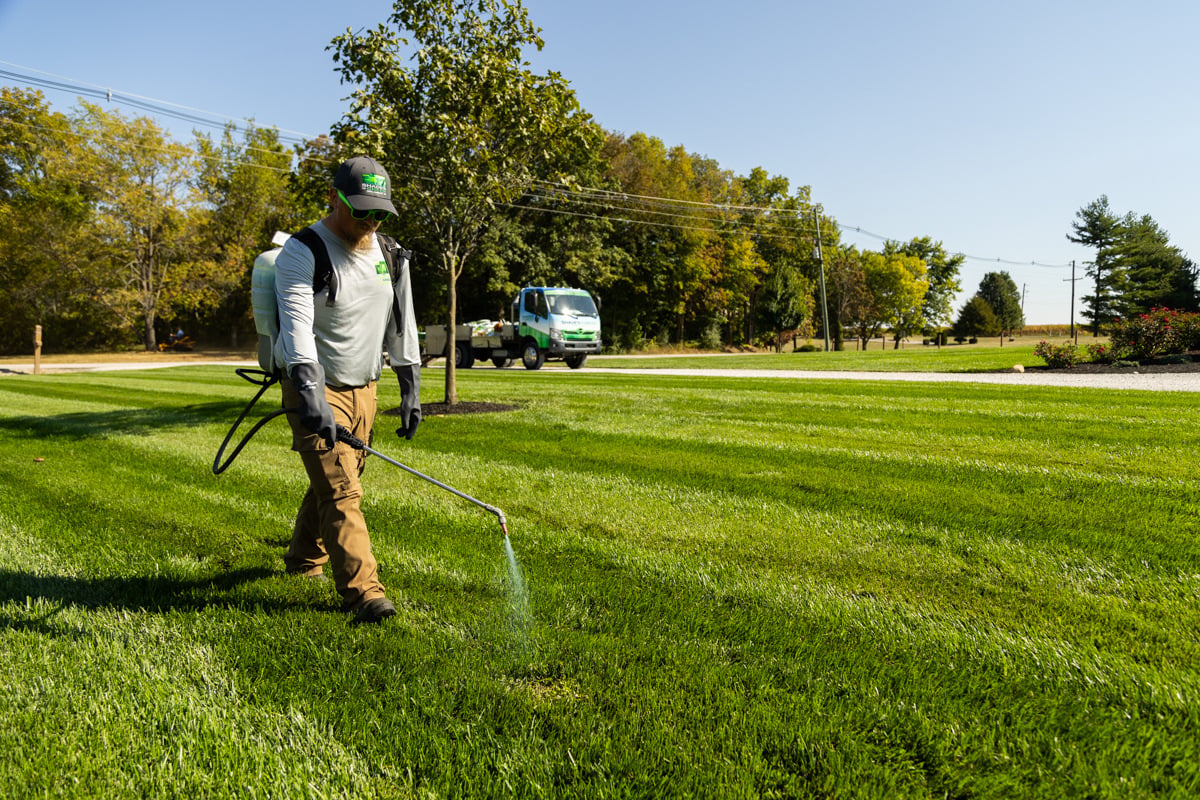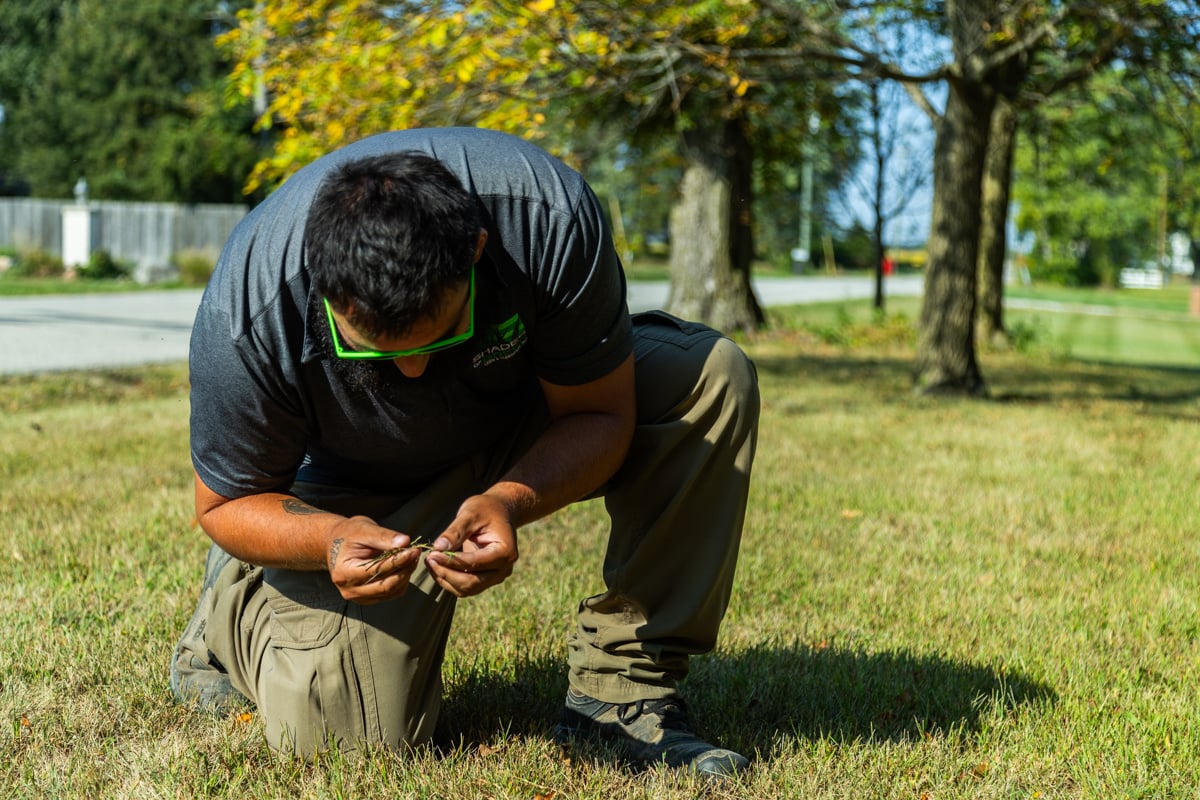



You’ve been doing everything right. Mowing on schedule. Watering just right. And then, you see it. A patch of crabgrass right along the edge of your property. Or worse, weeds creeping their way across your carefully cared-for turf.
You love your neighbor. But their weedy lawn? That’s another story.
It’s frustrating to pour time and effort into your yard only to watch someone else’s weeds try to undo it all. And unfortunately, when the property next door has more weeds than grass, your lawn can become the next target. Left unchecked, invasive weeds can quickly spread, weaken your turf, and make it harder to maintain the dense, green grass you’ve worked hard for.
Let’s walk through some proactive ways to defend your lawn from spotting signs early to creating a strong line of defense.
If your neighbor’s lawn is starting to look more like a weed farm than a front yard, it might be time to start paying attention to your lawn’s edges. Unfortunately, weeds don’t just stop at the property line.
Are there fast-spreading weeds creeping along the border? Is your crisp line between properties starting to look a bit fuzzy? These are some signs that trouble might be blowing in from next door.
Here are a few invasive weeds to watch out for:
Knowing which type of weed you are dealing with is half the battle. Some respond best to pre-treatment, and others need targeted post-treatment. When the source comes from across the property line, being proactive is key. Because the longer you wait, the more those weeds will make themselves at home in your yard.
If you want to stop neighbors' weeds in their tracks, your best weapon isn’t a fancy spray; it is a thick and healthy lawn. Strong turf acts like a green wall of defense, crowding out invaders before they have the chance to settle in.
Most lawns overrun with weeds have one thing in common: they are neglected. They are mowed too short, rarely watered, and fertilized irregularly. To help your lawn fight back against weeds, you don’t have to be perfect; just focus on these basics, done well and consistently.
Here’s how to build up a strong turf:
Weeds love stressed grass, and mowing too short is like asking them to move in. For most Midwest lawns, keeping your grass about three inches tall gives it enough leaf surface to photosynthesize properly and shade out weeds. Remember to sharpen your blades, too! Dull blades tear the grass instead of cutting it clean, which weakens the lawn and makes it more vulnerable.
Think of fertilizer as your lawn’s favorite snack. A well-fed lawn grows thick and lush, making it harder for weeds to sneak in. At Shades of Green, we create custom-blended fertilizers that match our local weather and soil, not some generic, one-size-fits-all stuff from a big box store.
If you water your turf too little, your grass will become weak and stressed. But if you water too much, it means perfect conditions for certain weeds and fungi. Aim for deep and infrequent watering, typically 1-1.5 inches per week, to encourage deep root growth and turf resilience.
Sometimes it is not enough to play defense; you need a solid border weed control strategy to stop it from creeping in. If you have aggressive weeds lurking next door, you will want to set up a boundary that keeps your lawn protected and puts you back in control.
Here’s how to do it:
A buffer zone along the edge of your lawn can help stop the spread. This is a narrow strip where we apply a targeted treatment to catch anything that tries to cross the line.
Weeds like crabgrass are most effectively treated in the early spring with a pre-emergent. Unfortunately, pre-emergents only work before the weeds appear, and won’t do anything for weeds that are already growing. For weeds like crabgrass, a buffer strip is important.
Once a weed shows up, don’t wait to treat it. A post-emergent herbicide is your best bet, especially near the edges of your lawn. It is important to be watching your turf so you can act quickly and keep the weeds from taking hold or spreading deeper into your lawn.
There are some really tricky and difficult weeds to treat, especially if they did not originate in your yard. That’s why tip number one is so important! Weeds like wild violet, yellow nutsedge, thistle, and creeping charlie or ground ivy are especially tough as they spread underground through deep root systems. If professionals cannot treat the source, likely found in your neighbor’s yard, they need to treat the edges of your yard aggressively and quickly. These underground-spreading weeds often need frequent and repeated treatment.
Constantly monitoring your lawn for invading weeds, figuring out what is creeping in, researching the best product, applying it just right, and then repeating the entire process over and over again is exhausting. Most homeowners like yourself frankly don’t have the time to manage weed invasions on top of everything else.
That’s where a professional weed control team can really make a difference.
At Shades of Green, we keep an eye on what’s happening at the edges of your lawn, what weeds might be trying to sneak in, and what conditions may be inviting them in the first place. And most importantly, regular and professional lawn care focuses on the biggest prevention tip: building a thick and healthy lawn that can fight off weeds on its own.
You don’t have to know everything about weeds, and you don’t have to battle them invading your backyard alone. Our team at Shades of Green is here to help protect the lawn you have worked hard to care for with science-backed treatments and attention to detail.
Ready to kick weeds to the curb for good? Get started today by filling out our contact form.

Cory is the heart and soul of Shades of Green. His dedication to doing right for our customers has been the driving force behind the company's success. With a degree in Turf Science from Purdue University, Cory continually strives to craft the best treatment plans using the latest technologies and innovative products, ensuring top-notch results for every client.





